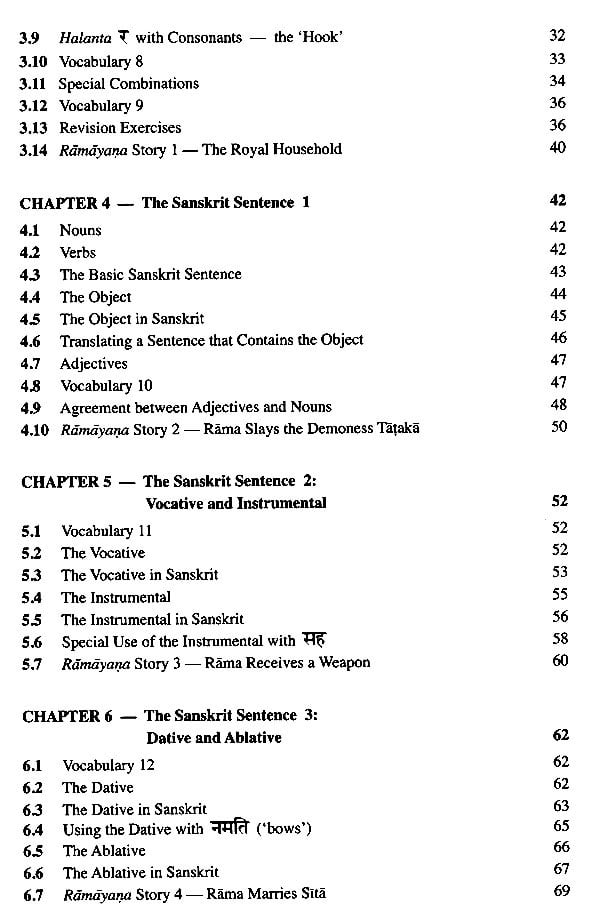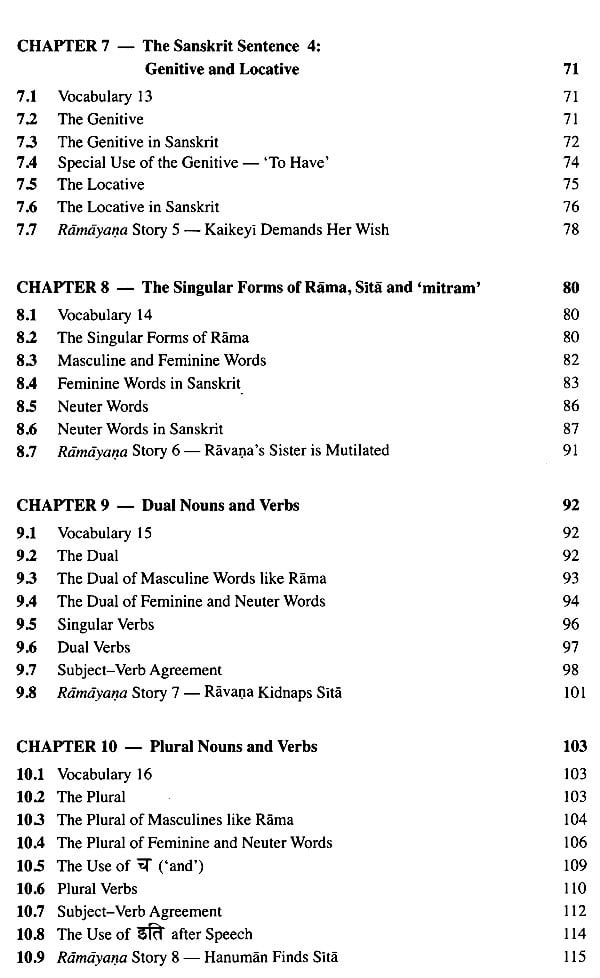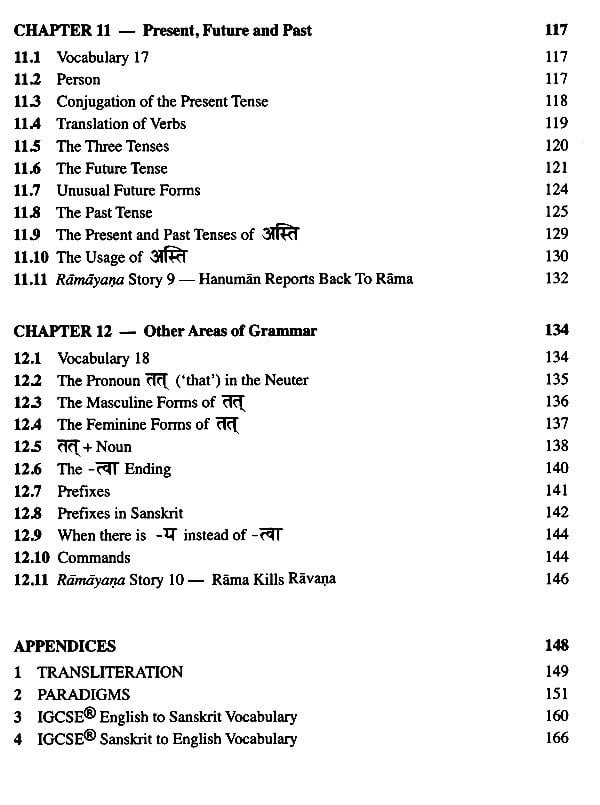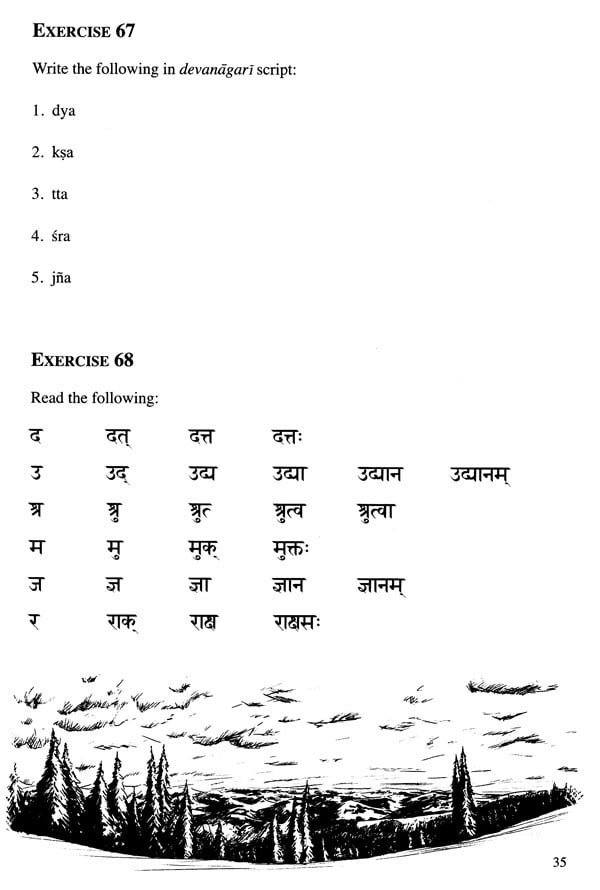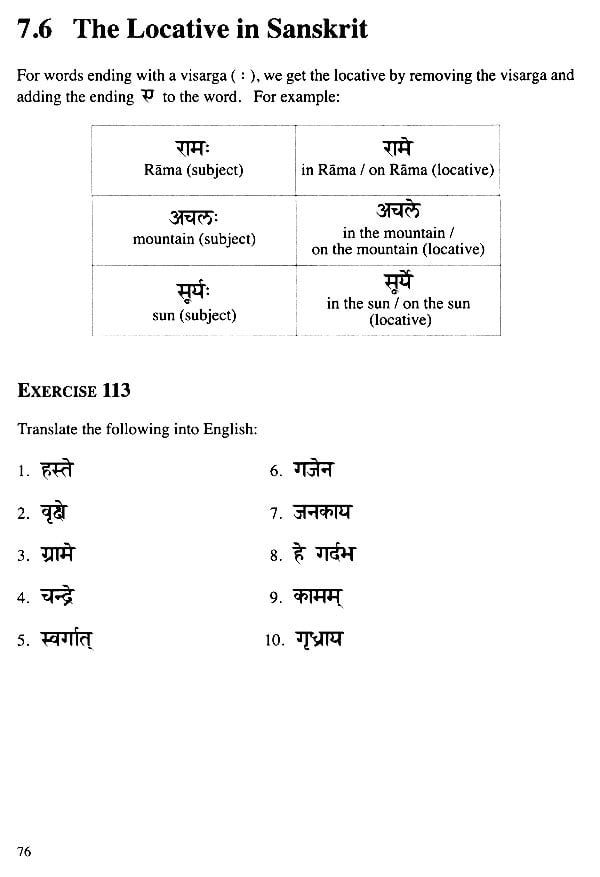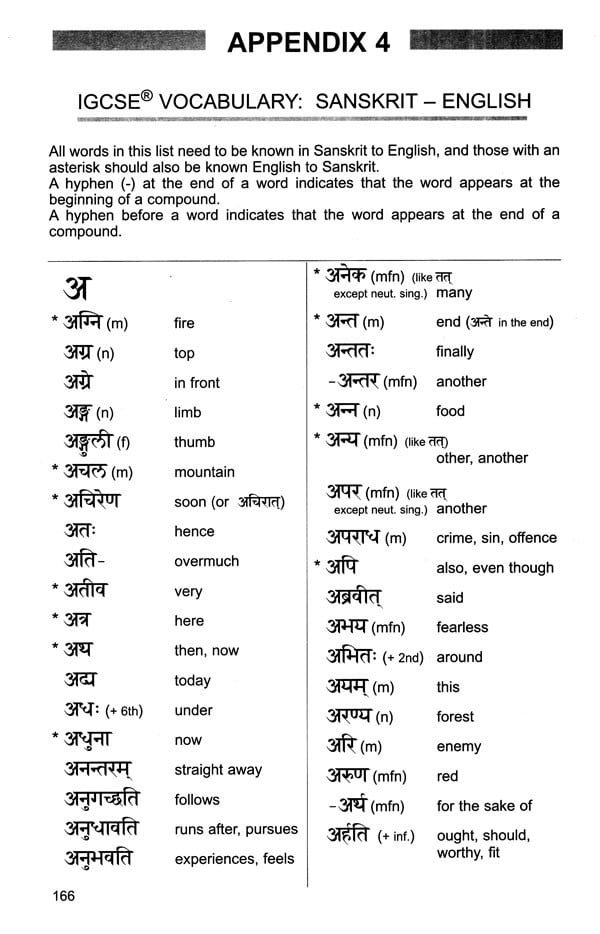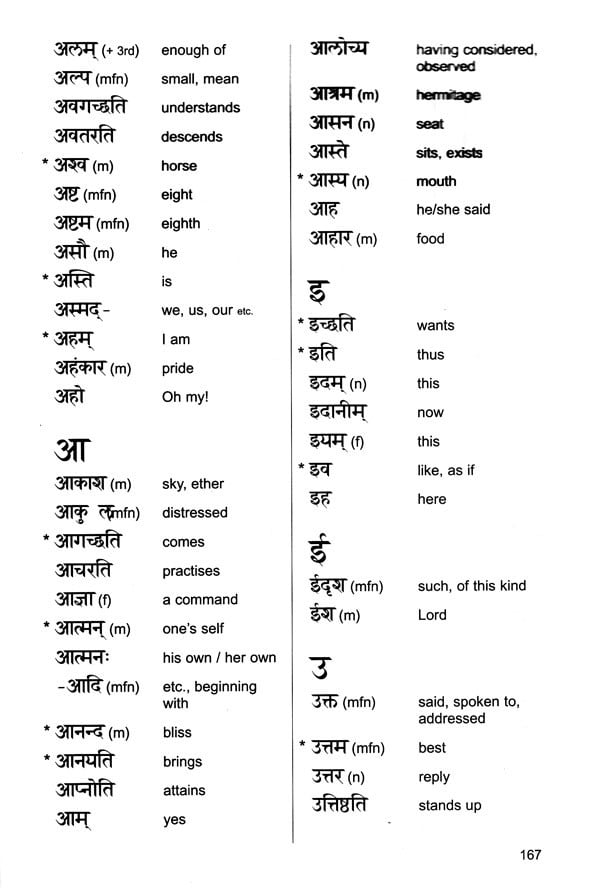
Sanskrit (An Introductory Course)
Book Specification
| Item Code: | QZZ676 |
| Author: | Warwick Jessup and Elena Jessup |
| Publisher: | MOTILAL BANARSIDAS PUBLISHERS PVT.LTD |
| Language: | English and Sanskrit |
| Edition: | 2020 |
| ISBN: | 9789390064748 |
| Pages: | 192 (Throughout B/W Illustrations) |
| Cover: | PAPERBACK |
| Other Details | 11.00 X 8.50 inches |
| Weight | 500 gm |
Book Description
THE SANSKRIT LANGUAGE in many parts of the world is a new element in today's education. It is an ideal study for the young because its systematic grammar orders the student’s mind. At the same time, Sanskrit literature provides the student with an exciting and profound interaction with a classical culture. This book introduces the alphabet and the combination of letters. It includes the basic forms of nouns and verbs and simple sentence construction. Plentiful exercises aid learning, and captivating stories demonstrate Sanskrit in action. This introductory course aims to prepare 11-year-old beginners for the ‘Stories from The Mahābhārata’ series which retells the famous epic in simple Sanskrit episodes and further develops the student's knowledge of grammar.
If you ever have the chance to visit St. James Schools in London, take it. At this school you will find well-behaved students who are bright and excited about learning. There are many reasons for thisI believe one of them is the school's interest in Sanskrit. There are many hidden advantages to learning this subtle and refined language, which is highly systematic. Studying Sanskrit creates orderliness within the brain, as has been shown in several studies.
The word “Sanskrit (saņskyta) means “perfected' or ‘refined'. Traditionally, Sanskrit was thought to have a perfect relationship between name (nāma) and form (rūpa). For the modern reader, this relationship is almost impossible to comprehend. However, most people who have listened to Sanskrit recitations will say that there is something soothing and calming about the language, unlike any other.
The sound, script, grammar, and orderly nature of Sanskrit are charming in themselves. The recitation of Sanskrit can be beautiful, and has been shown to have positive effects on the physiology, whether it is recited or heard. There is a large body of literature written in Sanskrit, with texts in philosophy, science, art, music, phonology, mathematics, architecture, logic, and much more. Indeed, Sanskrit is the source of Greek and Latin, and all of the languages that came from them.
Once entirely unknown outside India, in the last few centuries Sanskrit literature has had a profound influence throughout the world. The Vedas, Upanishads, Bhagavad-Gītā, Yoga Sūtras, and other sacred texts are now read and taught at most major universities, including Oxford and Cambridge. The early American writer, Thoreau, described his experience reading the Vedas:
What extracts from the Vedas I have read fall on me like the light of a higher and purer luminary, which describes a loftier course through a purer stratum
**Contents and Sample Pages**

